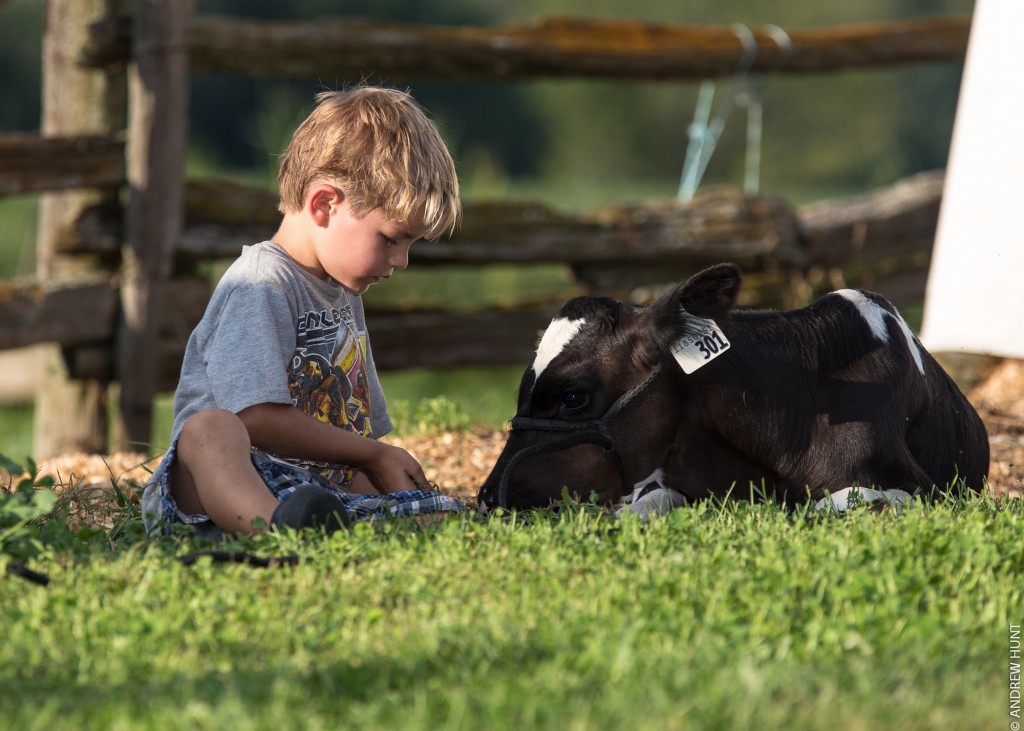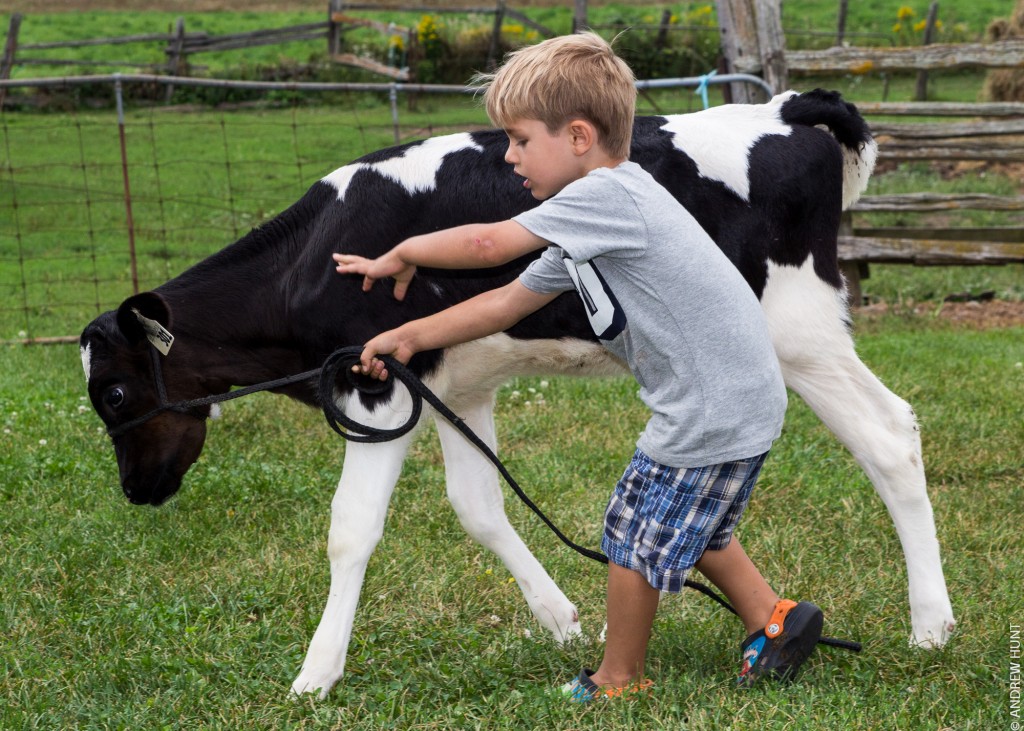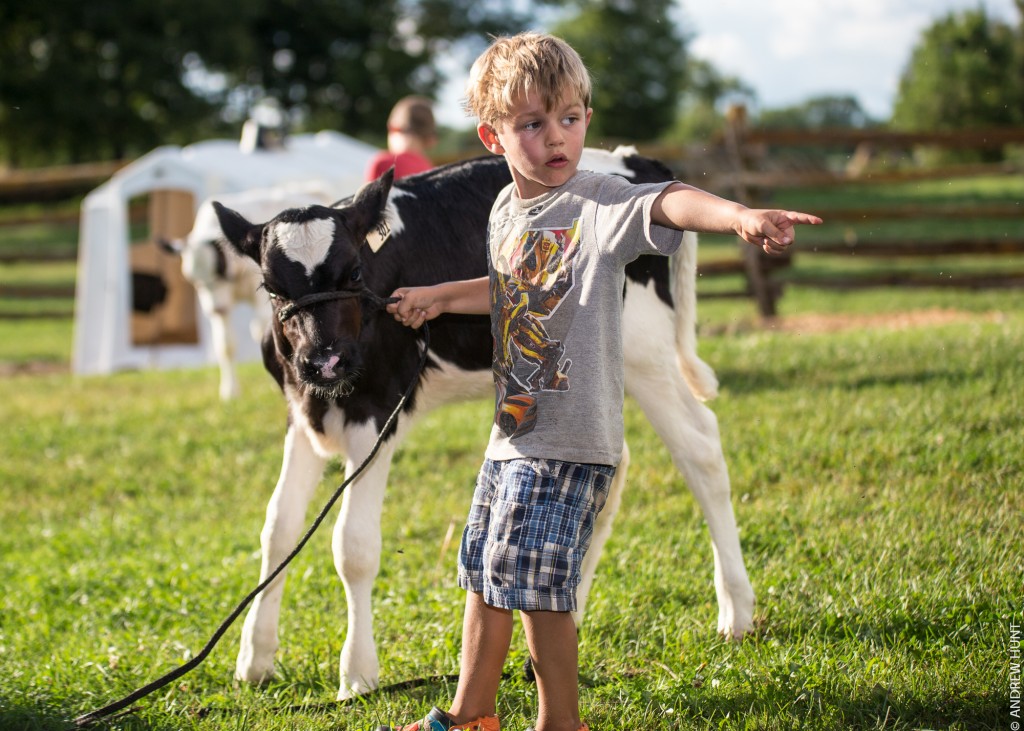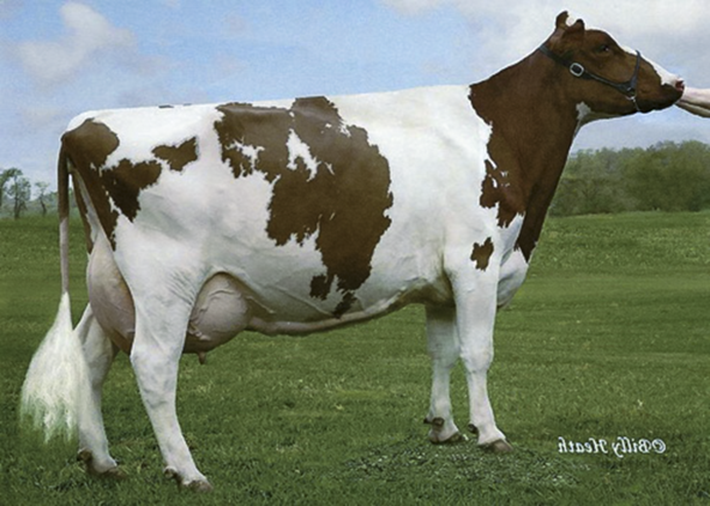It’s that time of year again. That time when over 70,000 people from 95 countries make the pilgrimage to World Dairy Expo – the “Center of the Dairy Universe.” They are here to check out more than 5 miles of trade show exhibits from over 850 companies. Having said that, what they really come to see is the 2,500 plus head of dairy cattle that will be exhibited in eight different championship shows. The greatest show cows from North America have already made their way to Madison for the 2013 World Dairy Expo (Day 1, Day 2, Day 3). But wait. Things are a little different this year. For the first time in a long time, we will not have a returning Grand Champion. We will not have one cow that arrives at Expo having dominated all the championship shows. What we do have is the most wide open field that we have seen in years.
The Judges
 This year’s International Holstein Show Judge is Justin Burdette. Justin Burdette and his wife, Claire, are partners with his parents, James and Nina Burdette of Windy Knoll View Farm in Mercersburg, Pa. These are the first people he called after finding out he would be the 2013 WDE Holstein Show Judge. Known for their outstanding breeding program, they have bred more than 150 Excellent Holsteins carrying the Windy Knoll View prefix, including two 96-point, four 95-point and twelve 94-point animals. Their farm has won numerous Premier Breeder and Premier Exhibitor awards, including the 2006 World Dairy Expo Premier Breeder Award. Justin has served as official judge for the 2011 International Ayrshire Show, 2012 European National Holstein Show in Italy, 2012 International Red & White Show and 2013 Mexican Holstein Show in Leon.
This year’s International Holstein Show Judge is Justin Burdette. Justin Burdette and his wife, Claire, are partners with his parents, James and Nina Burdette of Windy Knoll View Farm in Mercersburg, Pa. These are the first people he called after finding out he would be the 2013 WDE Holstein Show Judge. Known for their outstanding breeding program, they have bred more than 150 Excellent Holsteins carrying the Windy Knoll View prefix, including two 96-point, four 95-point and twelve 94-point animals. Their farm has won numerous Premier Breeder and Premier Exhibitor awards, including the 2006 World Dairy Expo Premier Breeder Award. Justin has served as official judge for the 2011 International Ayrshire Show, 2012 European National Holstein Show in Italy, 2012 International Red & White Show and 2013 Mexican Holstein Show in Leon.
Justin feels that an associate judge should be a person that is capable of handling the same responsibilities that he has. He wants an associate that knows good cattle and appreciates them and, most importantly, someone that you get along well with and who has the backbone to step up and give you an honest opinion. Those are the qualities he has found in Gus Schwartzbeck, from Union Bridge MD. Gus Schwartzbeck owns and operates Peace and Plenty Farms LLC. with his parents, Nona and Joe, and wife, Lisa. He has judged major Holstein shows in Pennsylvania, Kentucky, Ohio and Utah. Earlier this year he judged the Holsteins at the Western Spring National Show in Richmond, Utah.
Justin Burdette, the 2013 International Holstein Show Judge, would like to thank his parents and of course his wife Claire, who has been his best supporter and encourages him to judge a show whenever he has the chance, not to mention picking up a lot of the slack at home while he is gone. Justin would also like to thank Chris Hill who gave him the opportunity a few years back to be his associate and appreciates how that has opened countless doors for him.
When asked “What is the biggest thing you want breeders to say after the show?” Judge Burdette replied “I want the breeders and exhibitors to feel that each of their animals got the look that they deserved no matter where they placed. It takes a countless amount of time and money to exhibit that one animal for 45 minutes and I feel everyone needs to be treated fairly. Most importantly I want people to feel that the best animal won the class. That’s why I feel a pattern should be set and that’s how I like to place them.”

Judging the 2013 International Junior Holstein Show will be Pat Conroy of Angola, IN. The funny thing is that, at the time Pat found out that he would be the judge he was on the phone with Justin Burdette, the 2013 Holstein Show Judge. Pat Conroy is a full-time dairy cattle fitter who also markets purebred dairy cattle. He has fitted show cattle from coast to coast and in Canada, Mexico, Columbia, Argentina, Ecuador, Brazil, Australia, France, Germany and Switzerland. Pat’s previous judging experience includes the Kentucky State Holstein Show, California State Fair Holstein and Jersey Shows, and county shows in Pennsylvania and Minnesota. He is also part owner of the greatest show cow outside North America Decrausaz Iron O’Kalibra (Read more: Decrausaz Iron O’Kalibra – Simply The Best). Pat sends a big thanks out to his wife. “I’m gone roughly 300 days a year and she is the one who keeps things going at home so I can do what I do.”
Junior Classes
Much as they were last year, the junior classes are wide open. Coming into last year’s show there had been one pretty dominant heifer at most of the shows. Md-Dun-Loafin Lauth Elly was not at Expo last year because her owners were the judges. Notables include Winright Sid Elegance (Winter Yearling), who has been Jr Champion at Ontario Spring Show and the Ontario Summer Show as well as Res. Junior Champion at Maxville Spring Show. As well as a couple of spring yearlings ; MS LuLu Fever Legacy (Junior Champion New York Spring Show) and Cameron Ridge Atwood Beauty (Junior Champion All-American Holstein Show). Getting a lot of attention in the springtime was Pierstein Goldchip Rockstar, when she topped the taste of Ontario Convention Sale and won her class at the Quebec Spring Show, the Midwest Spring Nationals and the Illinois State Fair. Another animal to watch for is last year’s first place Fall Calf, Fanico Reginald Marty.
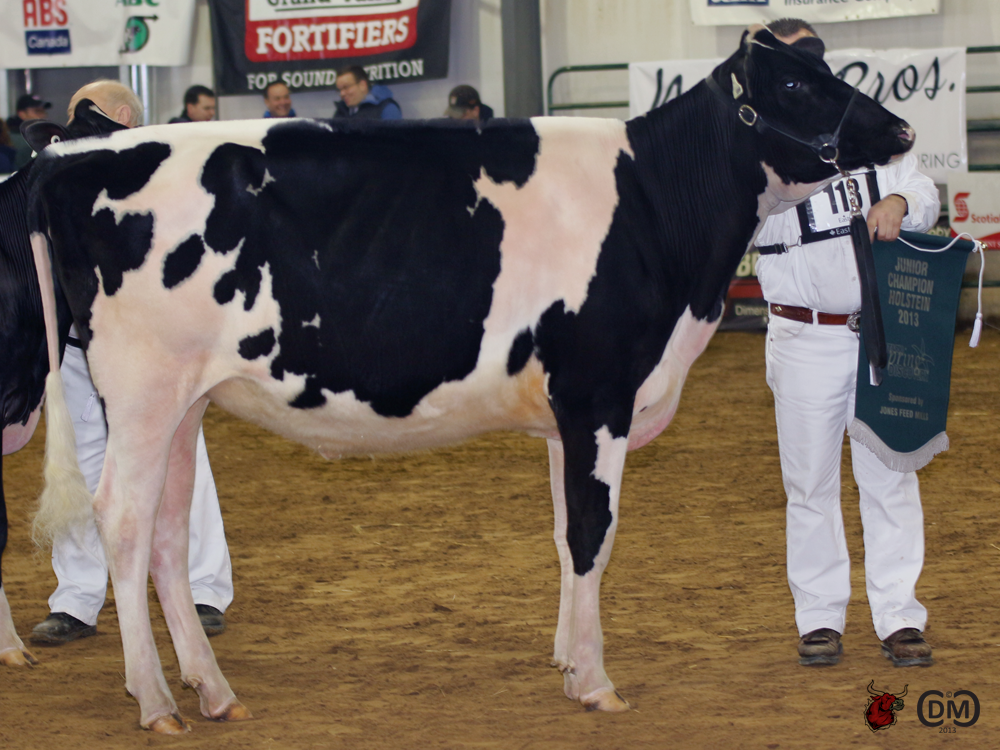
Winright Sid Elegance
 Intermediate Cow Classes
Intermediate Cow Classes
While heifer classes are nice, nothing compares to the cow classes. They are the classes that will have you on the edge of your seat and will “wow” you with how amazing these cows are. Judging by the extreme numbers of entrants already in our NEW contest, Fantasy Exhibitor © most of our readers feel the same way.
Junior 2 Year Olds
Riding a big wave into Madison, after winning the Quebec Champion Show is Belfast Goldwyn Lasenza. The Reserve All-Canadian Summer Yearling from 2012 has calved in well and has everyone talking. But don’t expect Lasenza to simply walk away with it. Others to watch for include Brookview American Girl, winner at the Mid-East Summer National, and Budjon-JK Snchz Exchange, winner at NY Spring Show and North East Fall National. Another young cow getting a lot of attention is Morsan Atwood Burka, winner at the Midwest Fall National. There could be many surprises in this class, as many of the top heifers from last year are calving just in time for this show and have not been out to any other shows yet.

Belfast Goldwyn Lasenza
Senior 2 Year Olds
With R-E-W Happy Go Lucky, the extremely popular Milking Fall Yearling from last year, not calving back for this year’s show, this class has really opened up. Front runners include Claquato-RH Elicit the winner at the All-American show and Duckett D Layla winner at the Western Fall National (Please note: This heifer is R&W and may not be in the B&W show, although, given the chance to contend in the B&W show, they may just put her in the big dance). Other cows to watch for in this class include Jacobs Duplex Anna, winner at the Quebec Championship Show, Charwill Attic Marcy who is fresh again and who beat Go Lucky at the NY Spring Show and the much talked about Crovalley Knowledge Akika. As in the Junior 2 year old class, there are also many headliners, such as Lafontaine Aftershock Arrie and Kingsway Sanchez Magician, that may also be at the show and could add some spice to an already tough class.
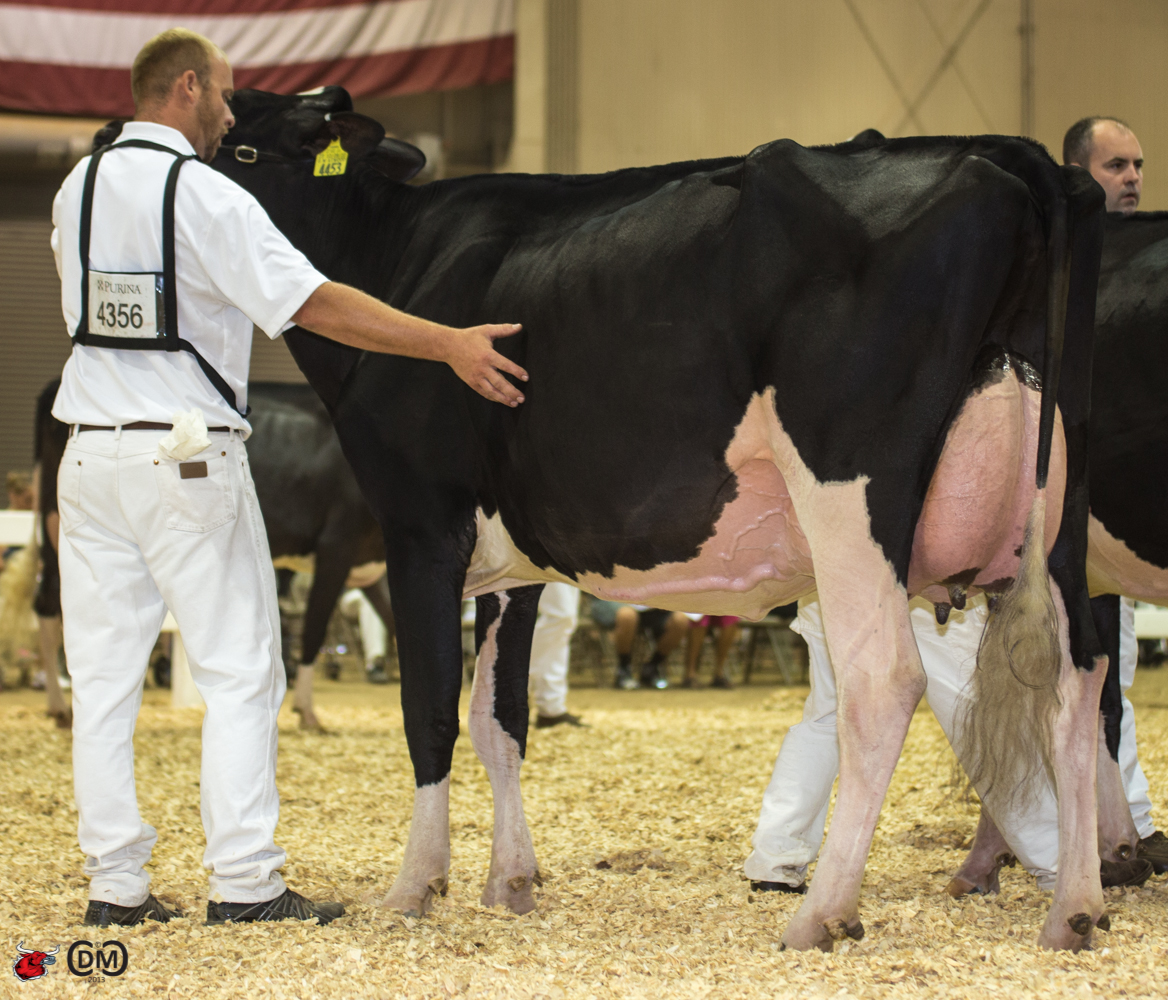
Claquato-RH Elicit
Junior 3 Year Olds
After her big Grand Champion win over RF Goldwyn Hailey at the Quebec Championship Show, Roquet Jasmine Sanchez is riding a tidal wave into World Dairy Expo. Expectations are high on Jasmine and competition is stiff. The full sisters BVK Atwood Abrianna and BVK Atwood Andrea are going to give her every ounce of competition that she can handle and, maybe, a little more. Others to watch for include Lookout Goldwyn Casea (winner at Ontario Summer Show), Cityview Goldwyn Ace (winner at All-American Show) and the very popular Joleanna Gold Pourinrain.
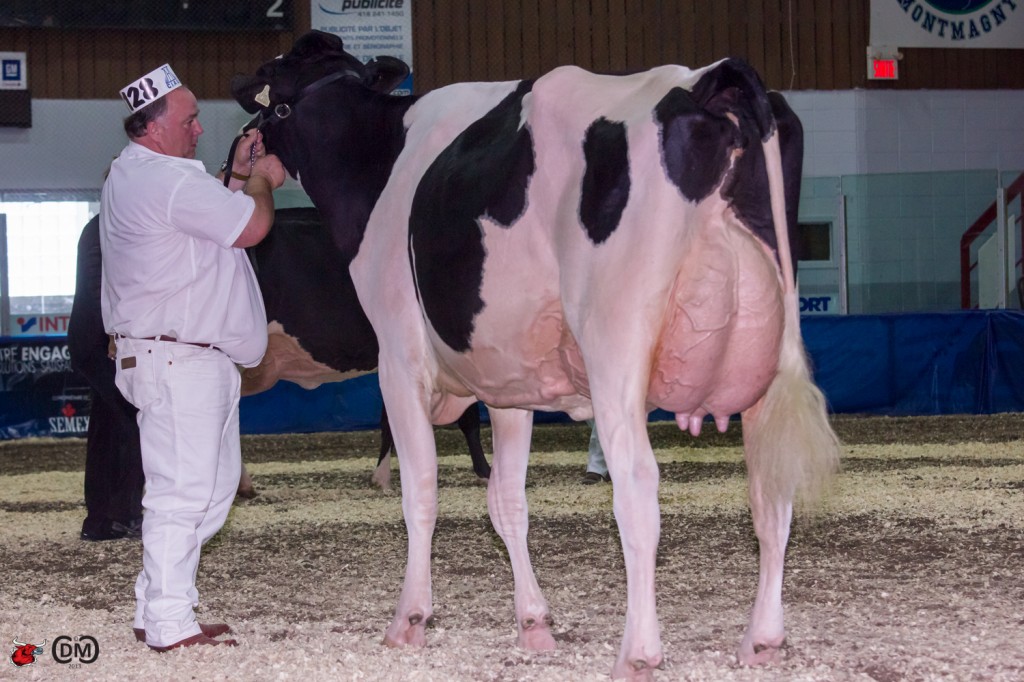
Roquet Jasmine Sanchez
Senior 3 Year Olds
The absence of the show winning Valleyville Rae Lynn has made the Senior 3 year olds, another wide open class. After their battle at the All-American show, the very popular Butz-Butler Gold Barbara will again have to go head to head with Cowtown Durham Grasshopper (who won at All-American) as well as her former herd mate East River Gold Deb 850 winner at the NY Spring National and the Midwest Spring National. Also in the running will be Raivue Sanchez Pamela, who gave Rae Lynn a good run for her money at the Ontario Summer Show. Some others to watch for in this class include Garay Alexander Destiny, Desnette Alexia Roseplex, Crater Indiana Goldwyn, Vedderlea Goldwyn Esther and Ernest-Anthony Allure.
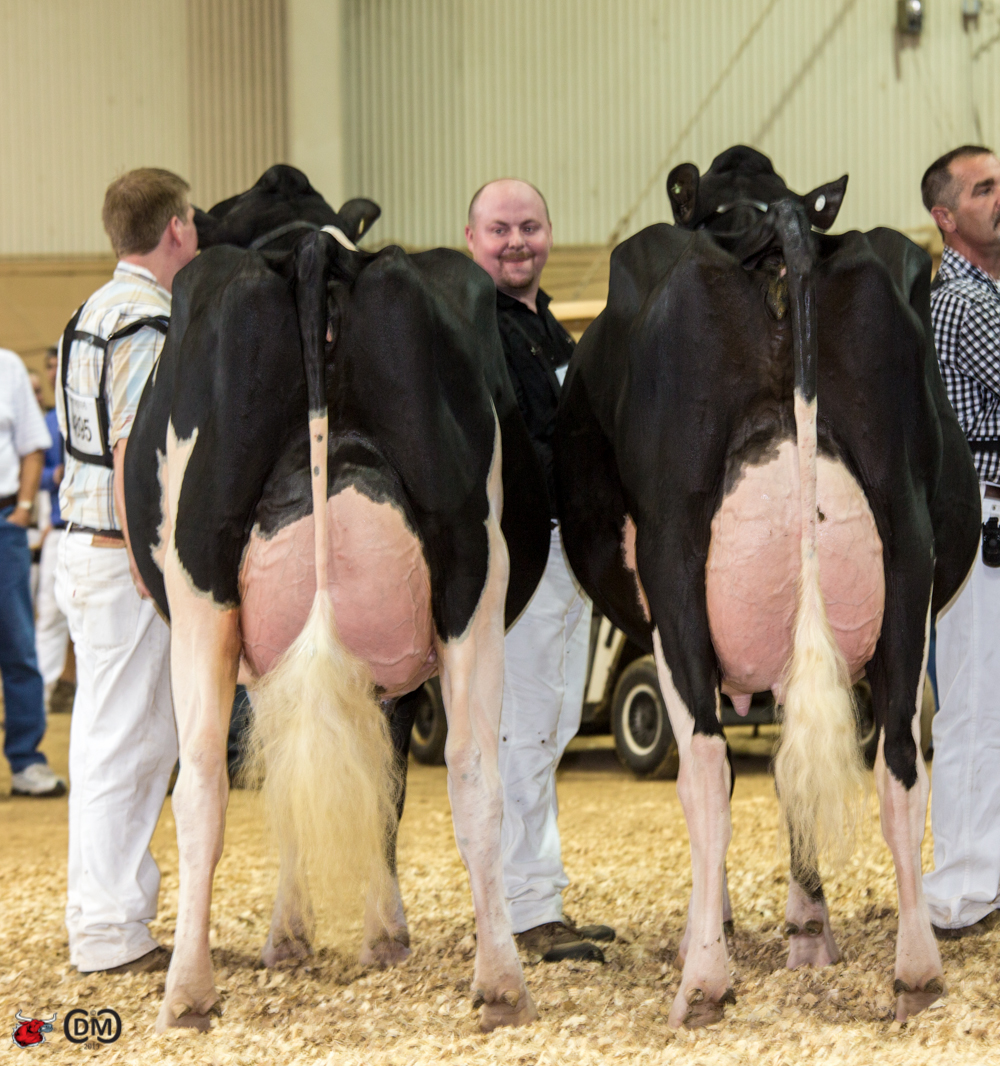
Cowtown Durham Grasshopper and Butz-Butler Gold Barbara
4 Year olds
While many would just hand this class to last year’s Intermediate Champion and worldwide fan favorite Cookview Goldwyn Monique, there are some other cows in this class that could make things interesting. They include Robrook Goldwyn Cameron who was All-Canadian Junior 3 year old last year, Craigcrest Rubies Gold Rejoice who is looking to regain her dominant ways of 2011 and Whittier-Farms Jasp Kinetic. Other cows to watch for are Arethusa Jasper Velour, Dubeau Jasper December and MS Pride Gold Invite. For those of you that are fans of KHW Regiment Apple 3 Red, something tells me she will be in the R&W Show as she has a great chance of being Grand in that show. For those of you looking for a cost effective sleeper pick, for your Fantasy Exhibitor© team, check out Howardview-WG Gold Casey. She has new ownership that is very eager to make a splash.

Cookview Goldwyn Monique
5 Year Olds
This year’s 4-year-old class could be the most wide open milking cow class of the day. To be honest, this is the class that I have seen and heard the least about. The two front runners in the class, Silvermaple Damion Camomile and Rosedale Lexington, have not seen a lot of action this year. It’s hard to say just which one should be the favorite coming into the show. Both cows have been very impressive in previous years. However, without seeing them in show form this year, it’s hard to give the edge to either one. Other cows to watch for include Rayon Dor Goldwyn Adonial, Ruann Lassiter Anna-70651 and J&K Vue Goldwyn Glamour.
6+ Years Old
You never know which cows will be in the 6+ year old class and which ones will be in the 150,000lb. class so, for now, I am looking at them as one class (please note Fantasy Exhibitor© participants points will be awarded as they stand in class, so it might be great to pick up a cost effective 150,000lb cow). For me this class is Bonaccueil Maya Goldwyn’s to lose. First off is the fact that, even though she got beat by Hailey at Quebec Championship show, this cow WOWED me at the show. At that very moment I thought it could be her year. Add to that the fact that Eastside Lewisdale Goldwyn Missy, the 2011 Supreme Champion, has not made the trip from Alberta and this class has really opened up. Of course we cannot forget last year’s winning 150,000 lb. class winner, Starbrite Lyster Lyndsay who is back again and should be hard to beat in that class. Other cows that will be worth watching for in these class include Maya’s herd mate the very popular Jacobs Goldwyn Britany, the Ontario Summer Show surprise Grand Champion Calbrett Goldwyn Layla, All-American Grand Champion Whitaker Stormatic Rae, Savage-Leigh Leona and Willowholme Goldwyn Jessica.

Bonaccueil Maya Goldwyn
The Bullvine Bottom Line
Every year you wonder if this year’s World Dairy Expo could possibly surpass last year’s show? Every year it seems to do exactly that. While there may not be any previous Grand Champions coming back, there will certainly be some of the best classes we have ever seen. For me, I think it’s going to come down to two cows, Cooksview Goldwyn Monique and Bonaccueil Maya Goldwyn. I cannot choose between the two, so I am not going to try. Well not until Friday. After seeing them both at World Dairy Expo, I will cap off my trip by picking the one that I think should be Grand.
Get original “Bullvine” content sent straight to your email inbox for free.









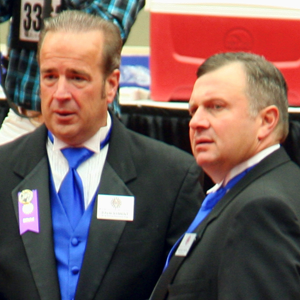
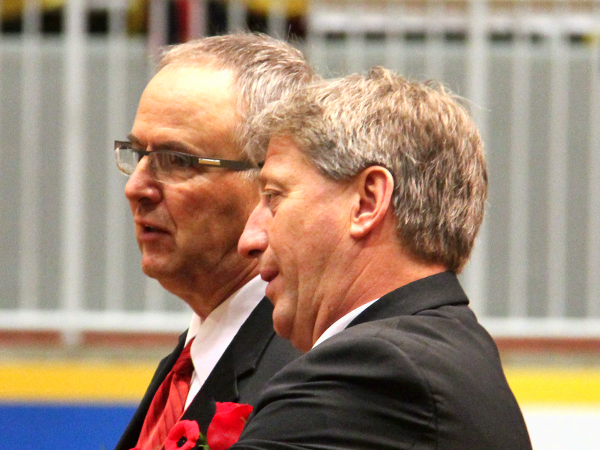



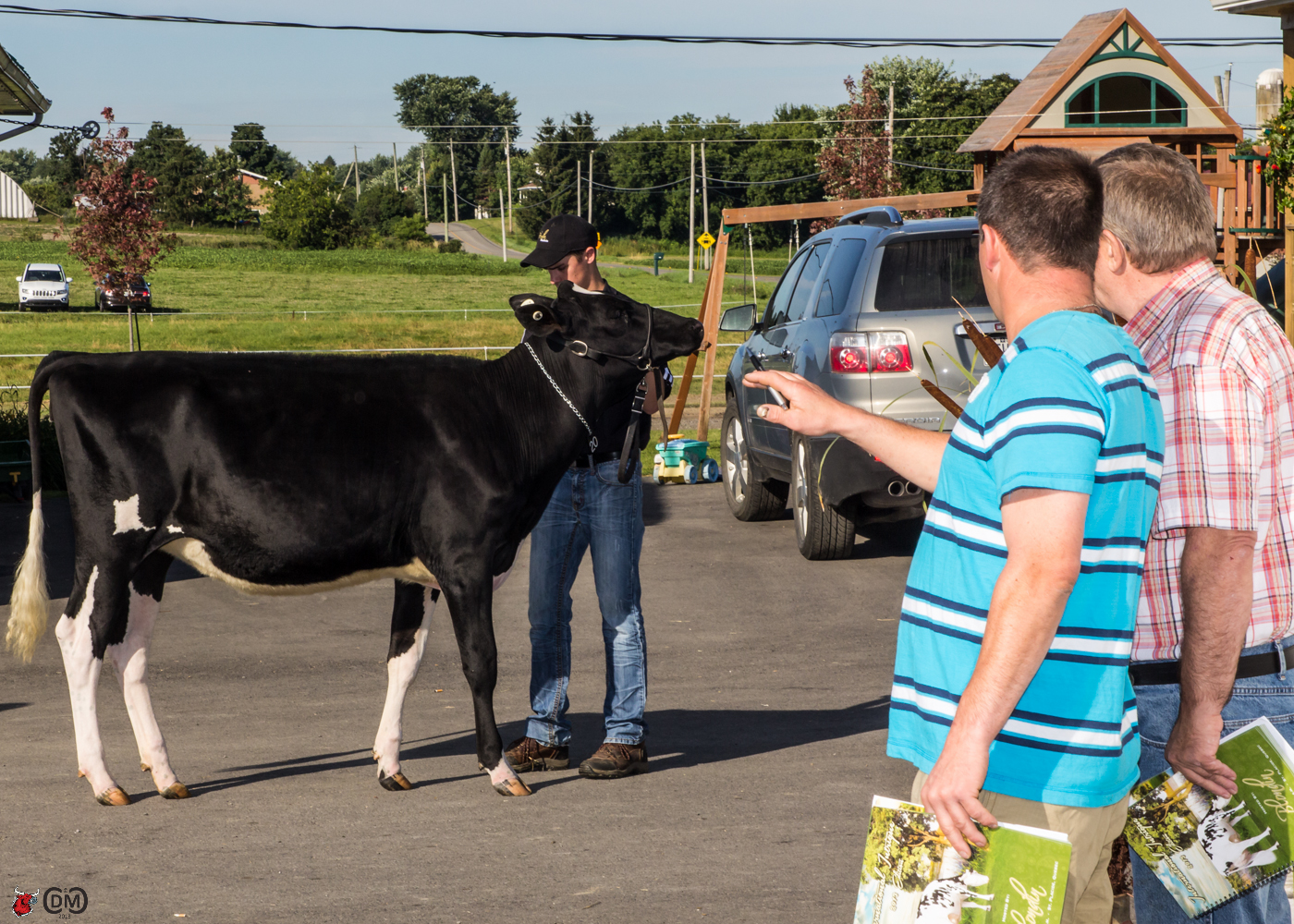
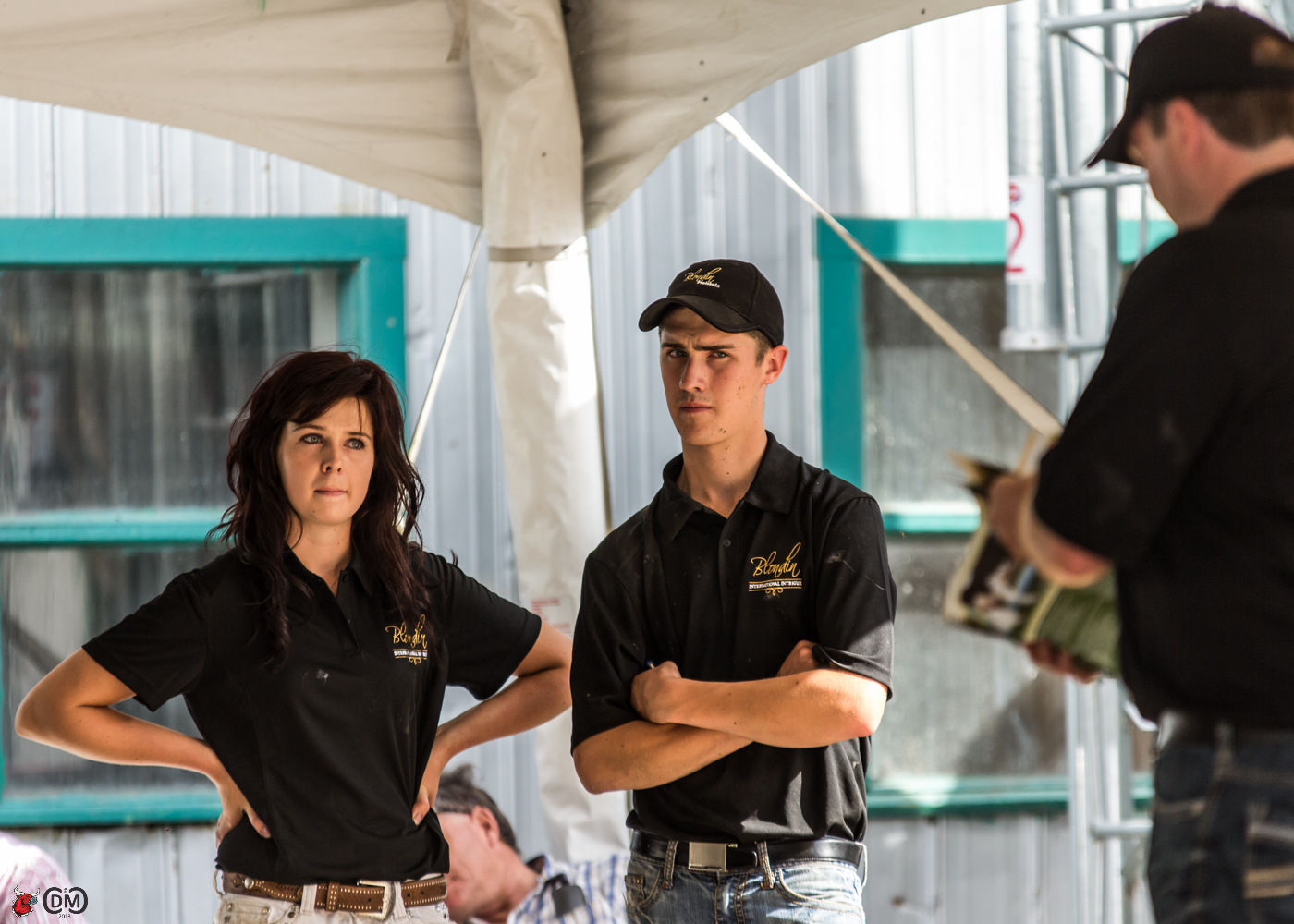
![512[1]](https://www.thebullvine.com/wp-content/uploads/2013/09/5121.jpg) “When you choose to stand up for a good cause you have to believe that you can make a difference.” Too many of us become discouraged with the negative picture of agriculture that is portrayed in the media. Even more disillusioning is the misinformation shared by friends and non-agricultural neighbors. Thus it is refreshing and reinvigorating to meet agvocate, Michele Payn-Knoper who has the courage and commitment to read, write and speak up for agriculture.
“When you choose to stand up for a good cause you have to believe that you can make a difference.” Too many of us become discouraged with the negative picture of agriculture that is portrayed in the media. Even more disillusioning is the misinformation shared by friends and non-agricultural neighbors. Thus it is refreshing and reinvigorating to meet agvocate, Michele Payn-Knoper who has the courage and commitment to read, write and speak up for agriculture.
![859223_10151728798897786_1264329335_o[1]](https://www.thebullvine.com/wp-content/uploads/2013/09/859223_10151728798897786_1264329335_o1.jpg)


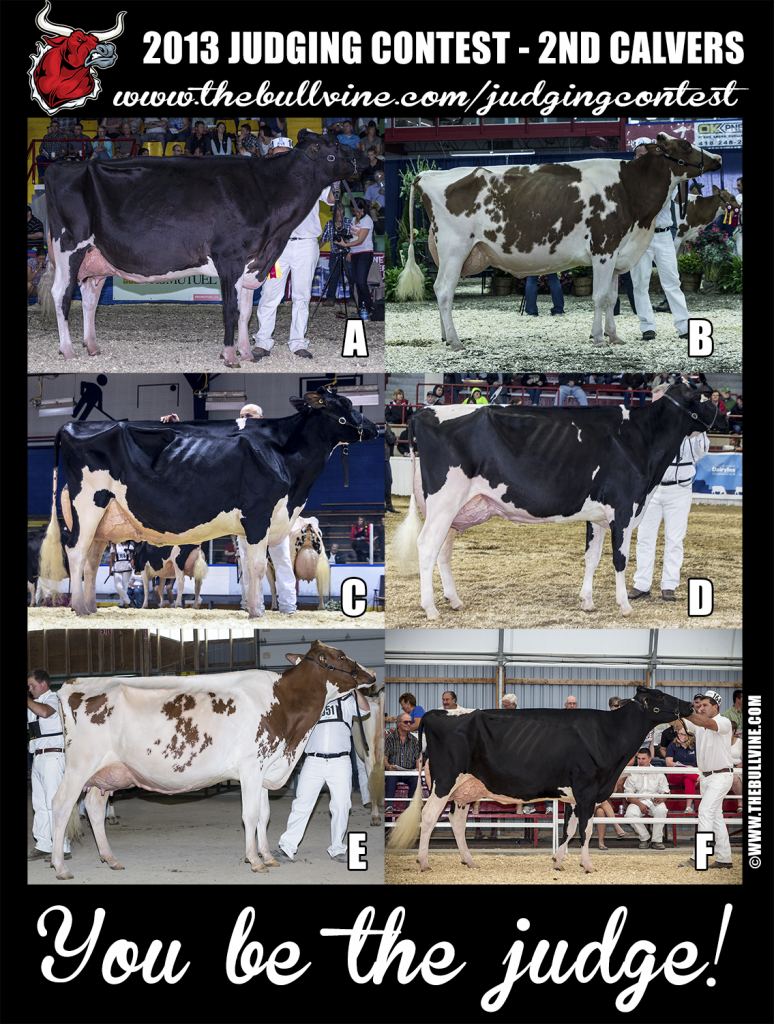

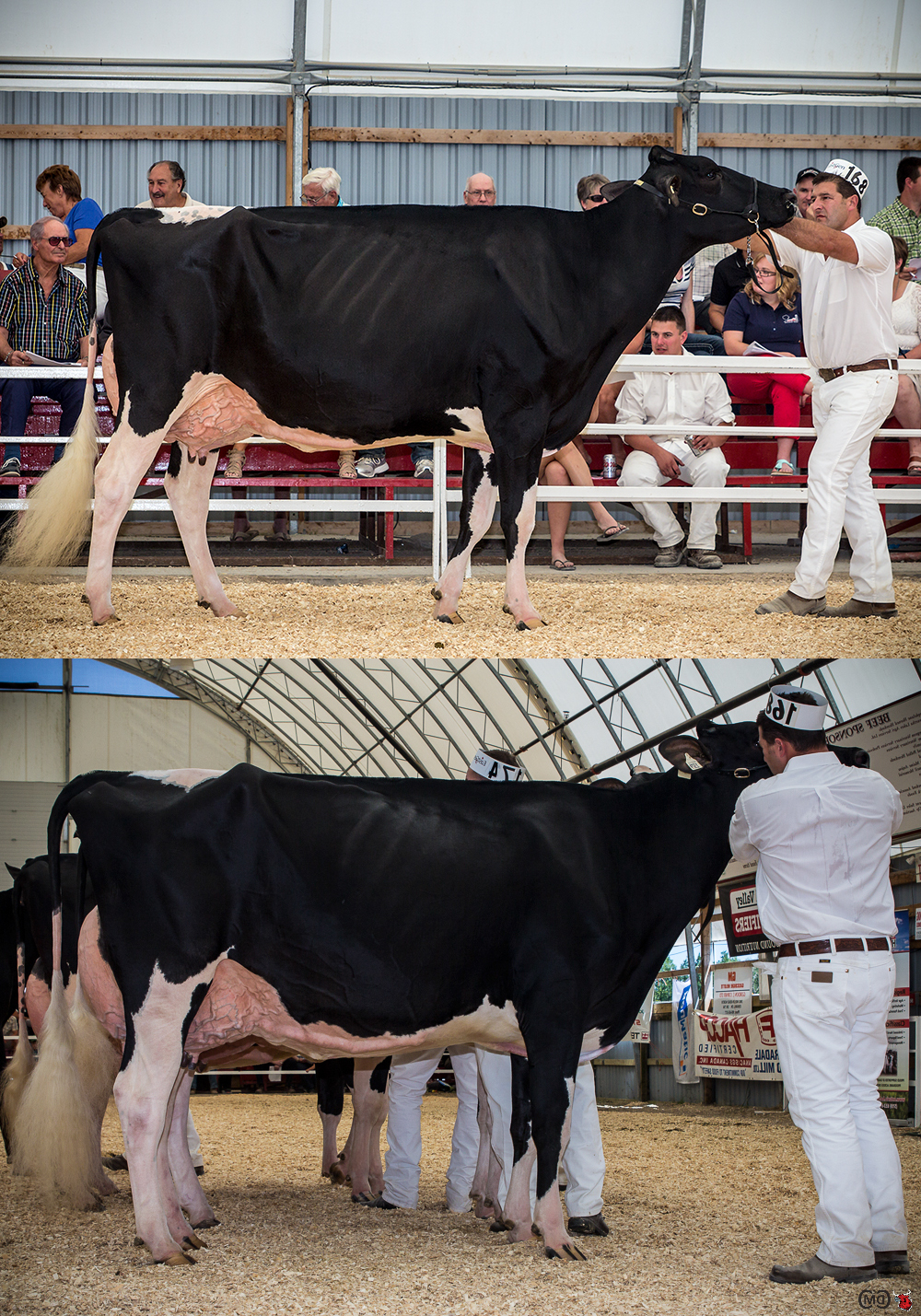
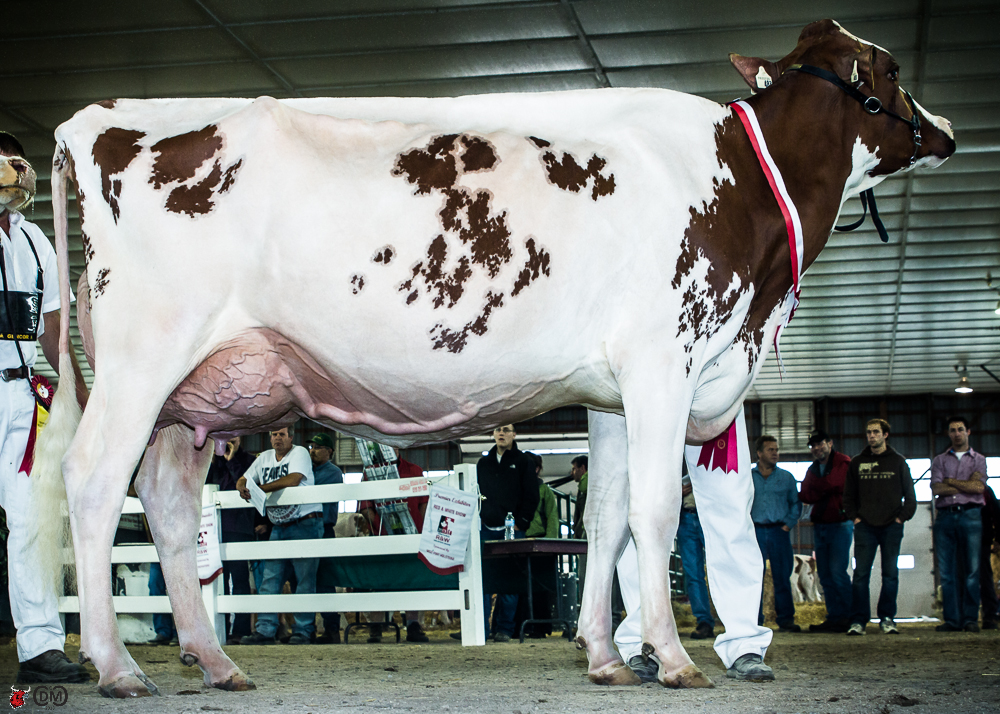
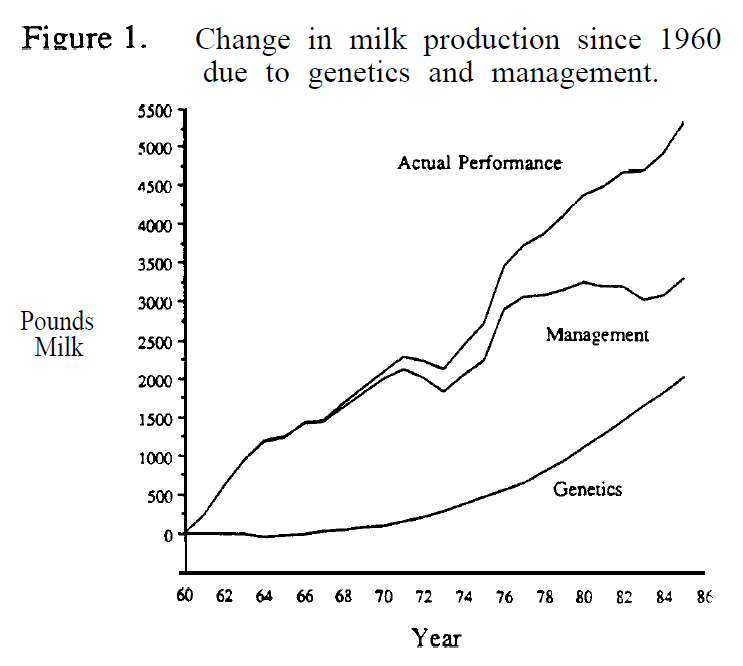

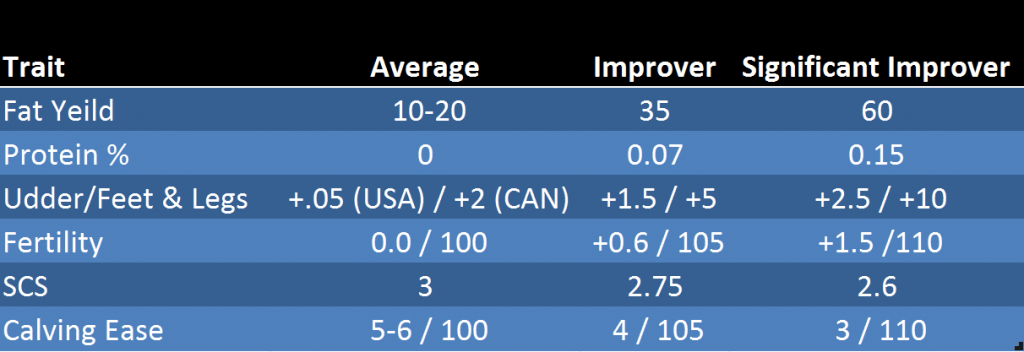
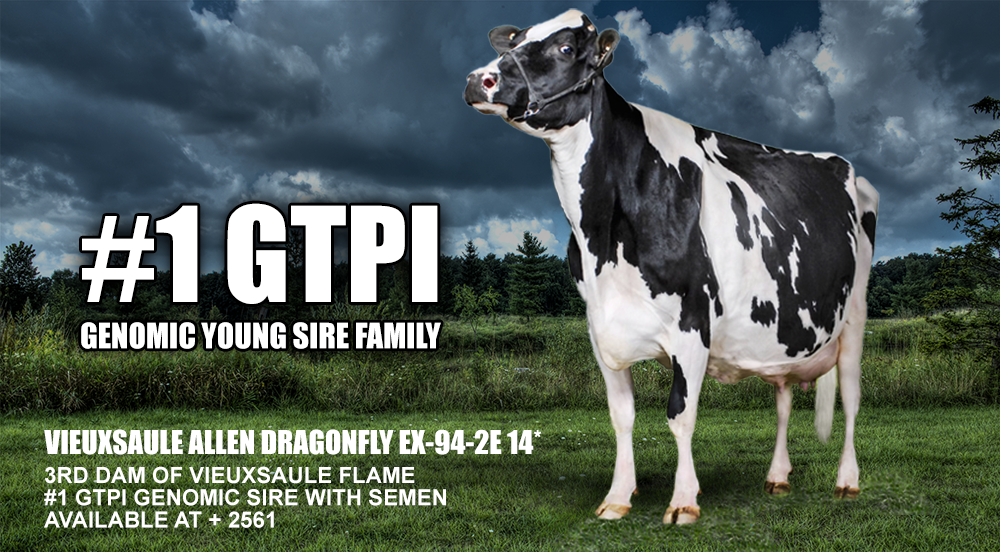
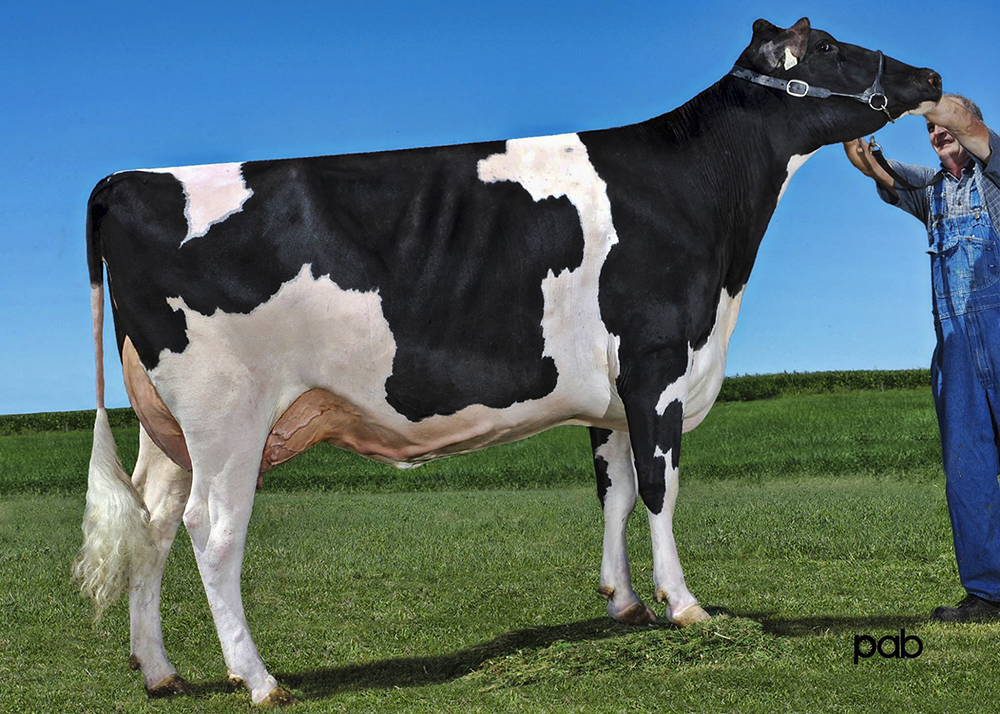
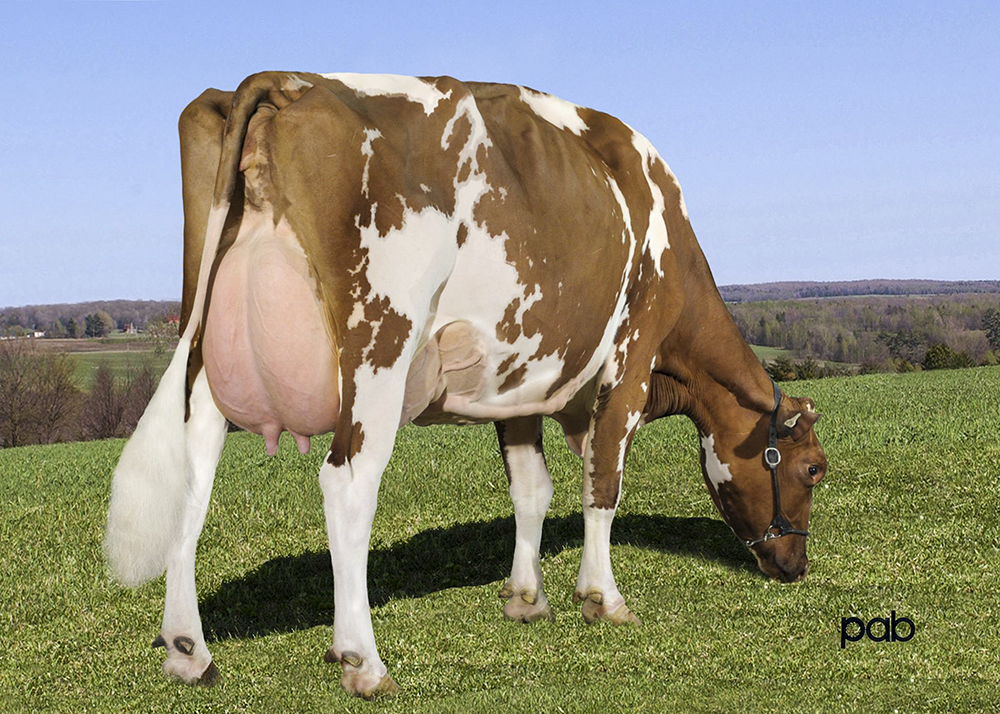
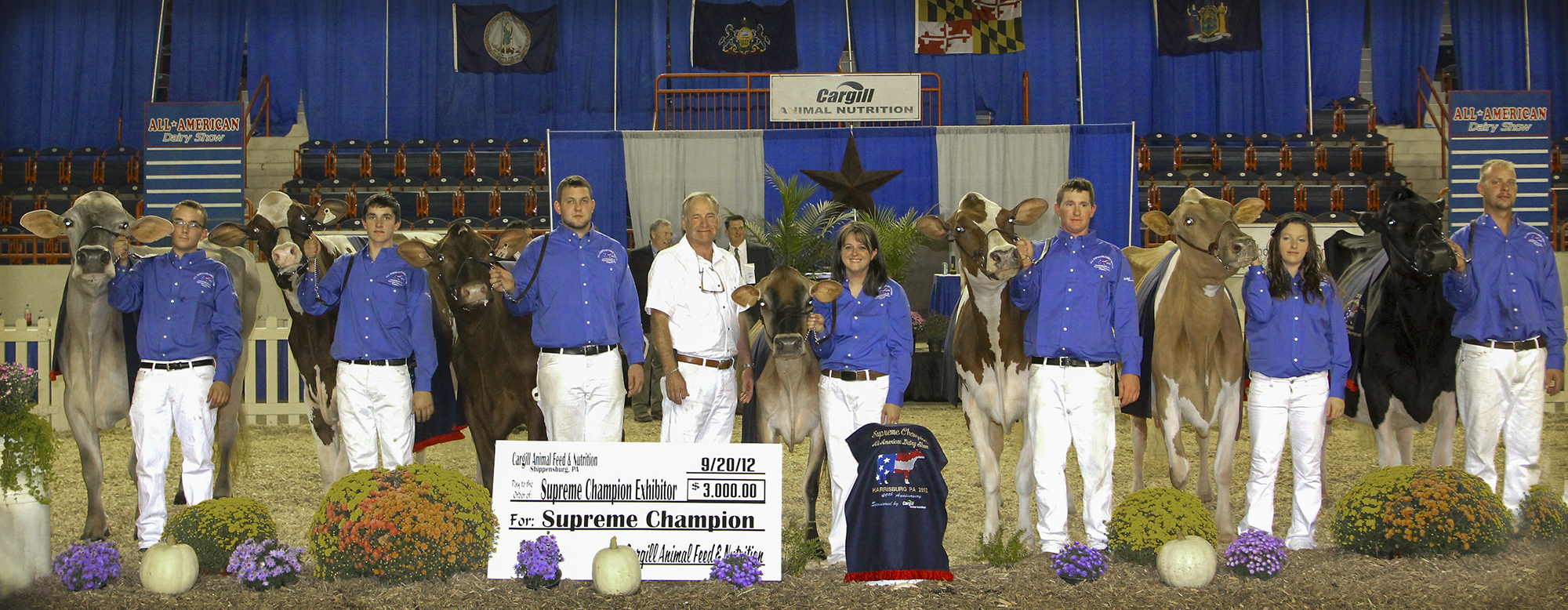




 Responsibility and then Review were the first priorities.
Responsibility and then Review were the first priorities.
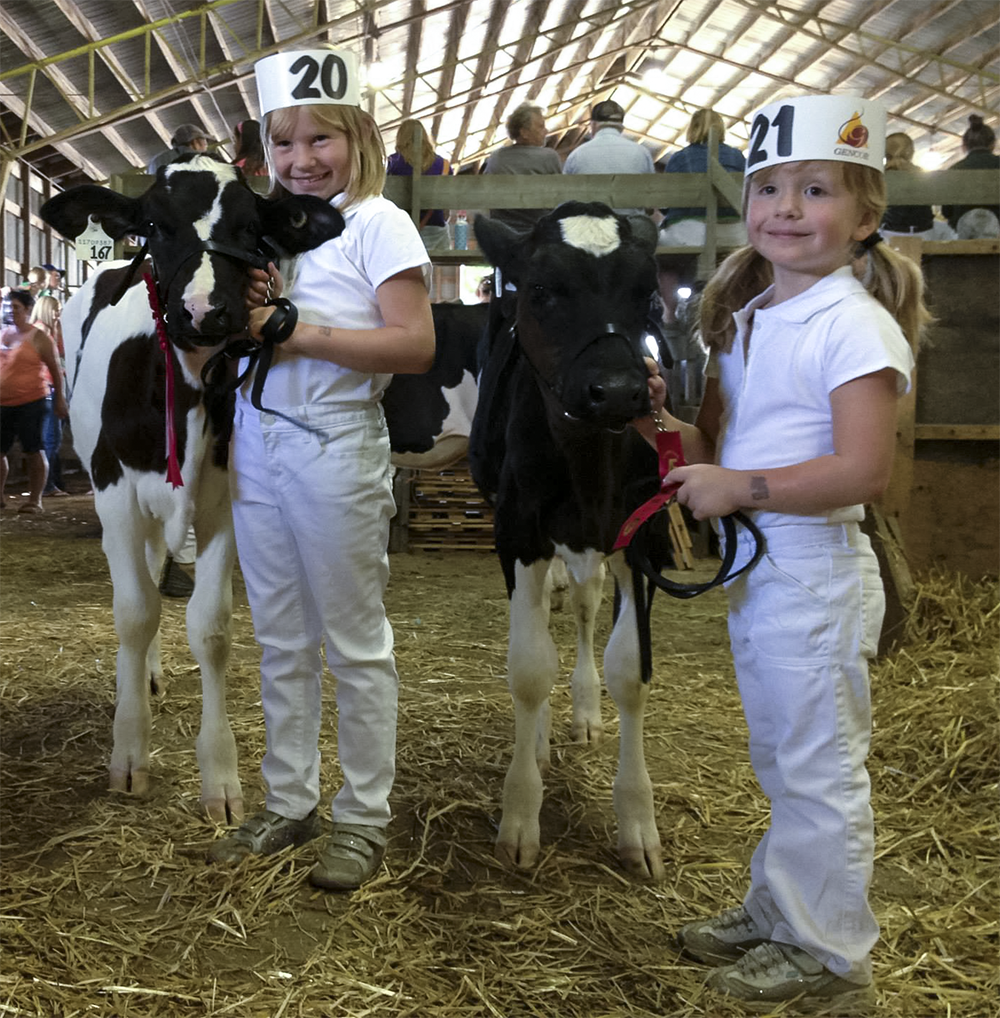

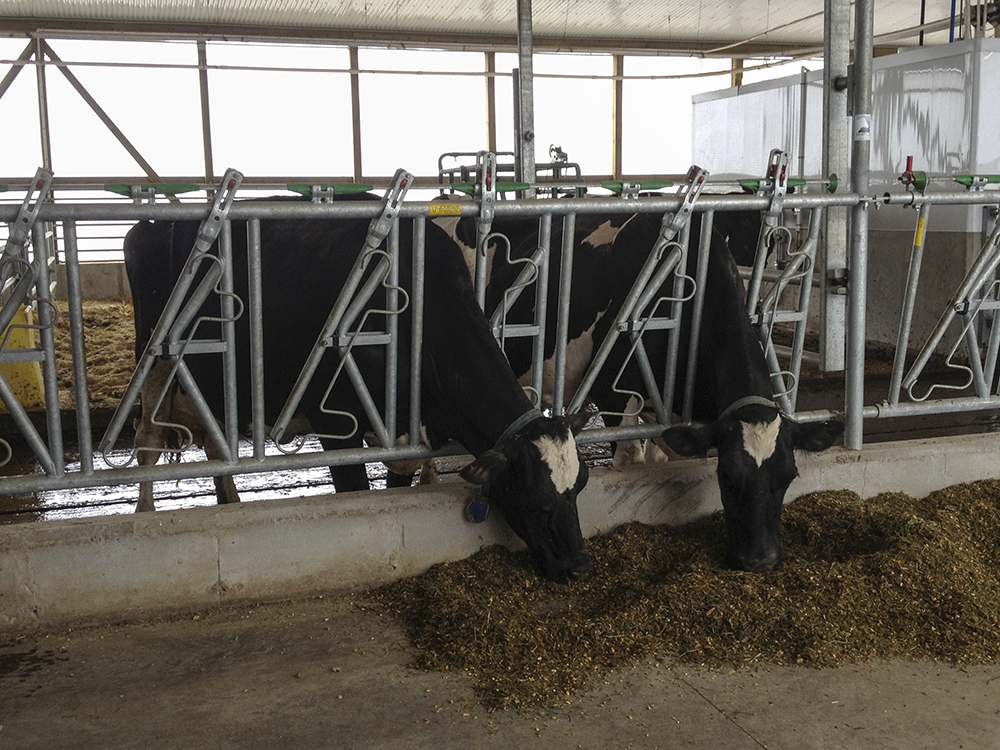
 Pettits See the Future – Precision Management
Pettits See the Future – Precision Management “This cow is being stolen!” cries out Horace Backus, from the auctioneer’s box at the US National Convention sale. ‘A beautiful Jasper daughter with such a magnificent pedigree gets such a low offer – that is pure robbery!” adds Backus. Pounding his fists onto the podium, Backus has a point, since they are getting less than $5,000 for a very productive cow and moments earlier a very young calf sired by a genomic young sire sold for over $20,000. Here you have an animal already proving her profitability versus a calf that has nothing more to show for herself then a simple little test? I ask you ”Does the marketplace have it all wrong?”
“This cow is being stolen!” cries out Horace Backus, from the auctioneer’s box at the US National Convention sale. ‘A beautiful Jasper daughter with such a magnificent pedigree gets such a low offer – that is pure robbery!” adds Backus. Pounding his fists onto the podium, Backus has a point, since they are getting less than $5,000 for a very productive cow and moments earlier a very young calf sired by a genomic young sire sold for over $20,000. Here you have an animal already proving her profitability versus a calf that has nothing more to show for herself then a simple little test? I ask you ”Does the marketplace have it all wrong?”
